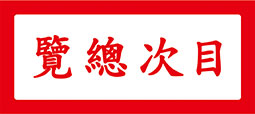Mr. P’u Ju (溥儒先生), tzu Hsin-yü (心畬), passed away in kuei-mao (癸卯) year, on the date of 18 November 1963 according to the Gregorian Calendar. It has been exactly one chia-tz’u (甲子) cycle since his death, a sexagenarian cycle of sixty years. The world admired the art of Mr. P’u Ju, and exalted his brushwork as the last authentic stroke in the tradition of literati painting. It is rare for men of letters to apply their talents equally to the three disciplines of poetry, calligraphy and painting, to excel and reach the highest level for all. Furthermore, in the great turmoil of recent history, classical studies have so crumbled and declined that it is hard enough to continue.
Beside his literary pursuits, mastery of the arts and scholarly erudition, the world especially revered the rectitude and integrity of Mr. P’u Ju. When Manchukuo, a Japanese vassal state, was first established in 1932, the abdicated emperor P’u I (溥儀) summoned him to the capital Ch’ang-ch’un. Mr. P’u Ju responded with a long essay titled Ch’en-p’ien (臣篇) and declined. When mainland China fell to the communists in 1949, they tried to win him over by offering the positions of “member of National Committee” and “minister”. Mr. P’u was only determined to leave and voyaged to Taiwan by boat.
When he first arrived in Taiwan, the last bastion of the Republic of China, he wrote a letter to Chang Chen-fu (張真夫), the former commander of Ch’ung-ch’ing Military Police, with these sentences:
“I am so impoverished that I do not know what to do. Although I am destitute, on the issue of righteousness, I am at peace. It is a worthwhile consolation. My only hope is to evade hunger and cold, and to abide by my moral principles at old age.”
Mr. P’u Ju was buried in the Number One Public Cemetery on Yangmingshan, Taipei. The Chinese-Heritage Virtual Museum has carefully produced a film of his tomb. For those Chinese and Caucasians who are likewise attached to the legacy of Mr P’u Ju, we hope this can be an opportunity to linger at his tomb to pay personal homage.
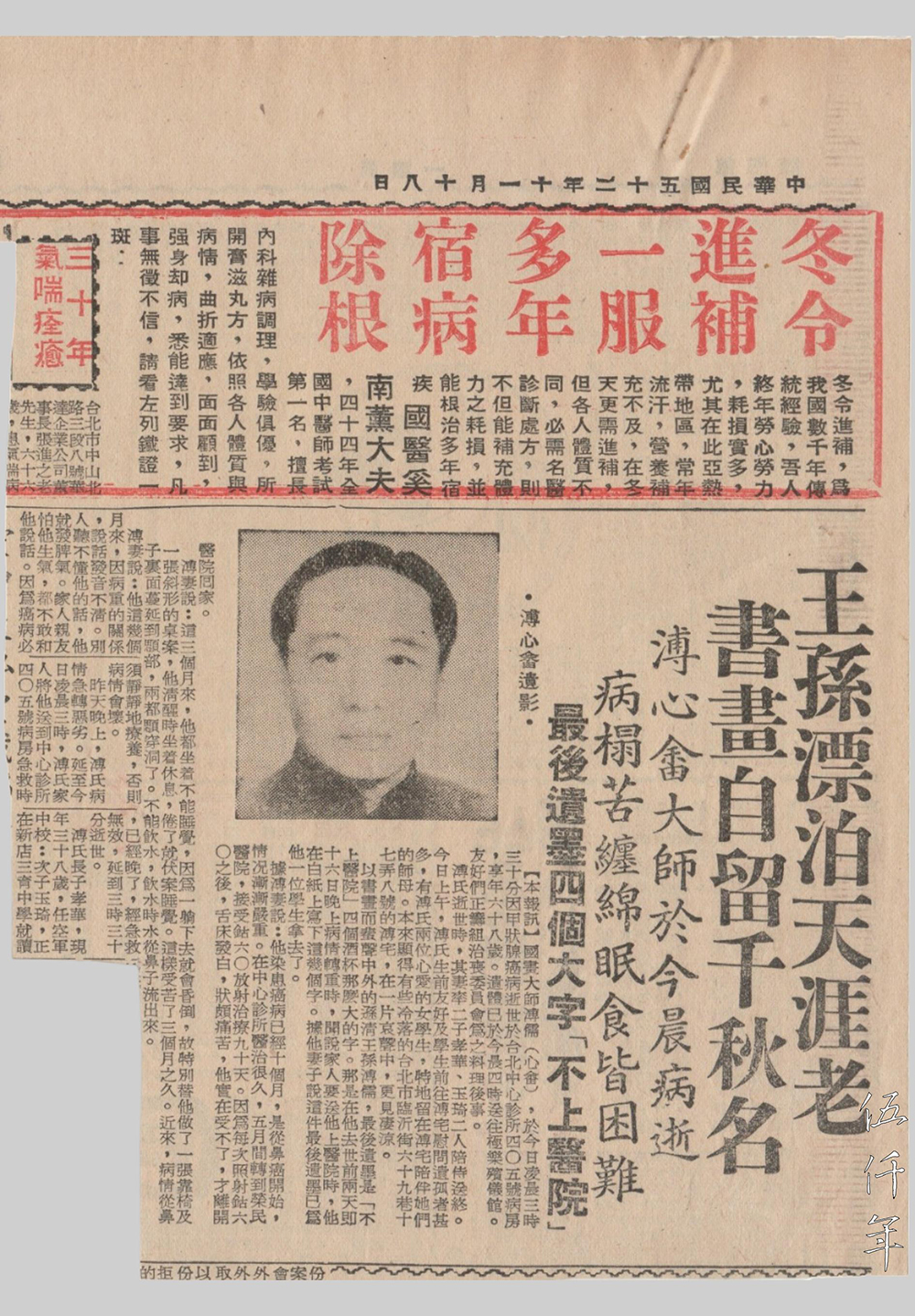
Mr. P’u Ju passed away at 3:30 am on 18 November 1963 in Central Clinic Hospital, Taipei, aged sixty eight. This news clipping about the death of Mr. P’u is dated 18 November 1963. Photograph courtesy Mr. Tung Liang-yen and Mr. Tung Liang-shuo

A copy of United Daily News dated 19 November 1963 reporting on the death of Mr. P’u Ju, with a number of commemorative articles. Photograph courtesy Mr. Tung Liang-yen and Mr. Tung Liang-shuo

A copy of Credit Newspaper dated 19 November 1963 reporting on the death of Mr. P’u Ju, with a number of commemorative articles. Photograph courtesy Mr. Tung Liang-yen and Mr. Tung Liang-shuo

A newspaper supplement with an assortment of photographs in remembrance of Mr. P’u Ju. Photograph courtesy Mr. Tung Liang-yen and Mr. Tung Liang-shuo
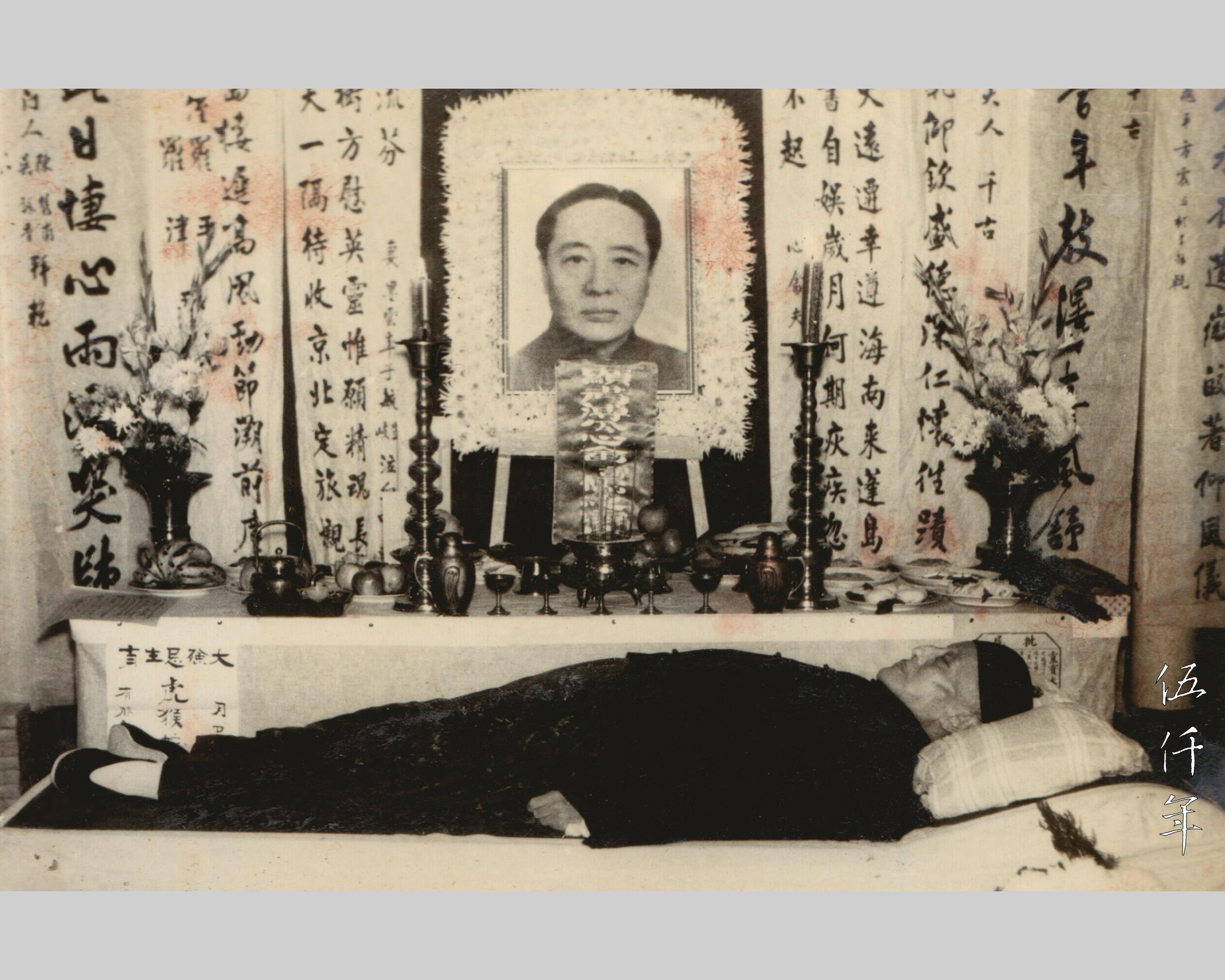
The casket of Mr. P’u Ju was soon moved from Central Clinic Hospital to the state room of Chi-le Funeral Home on 18 November 1963. Photograph courtesy Mr. Tung Liang-yen and Mr. Tung Liang-shuo
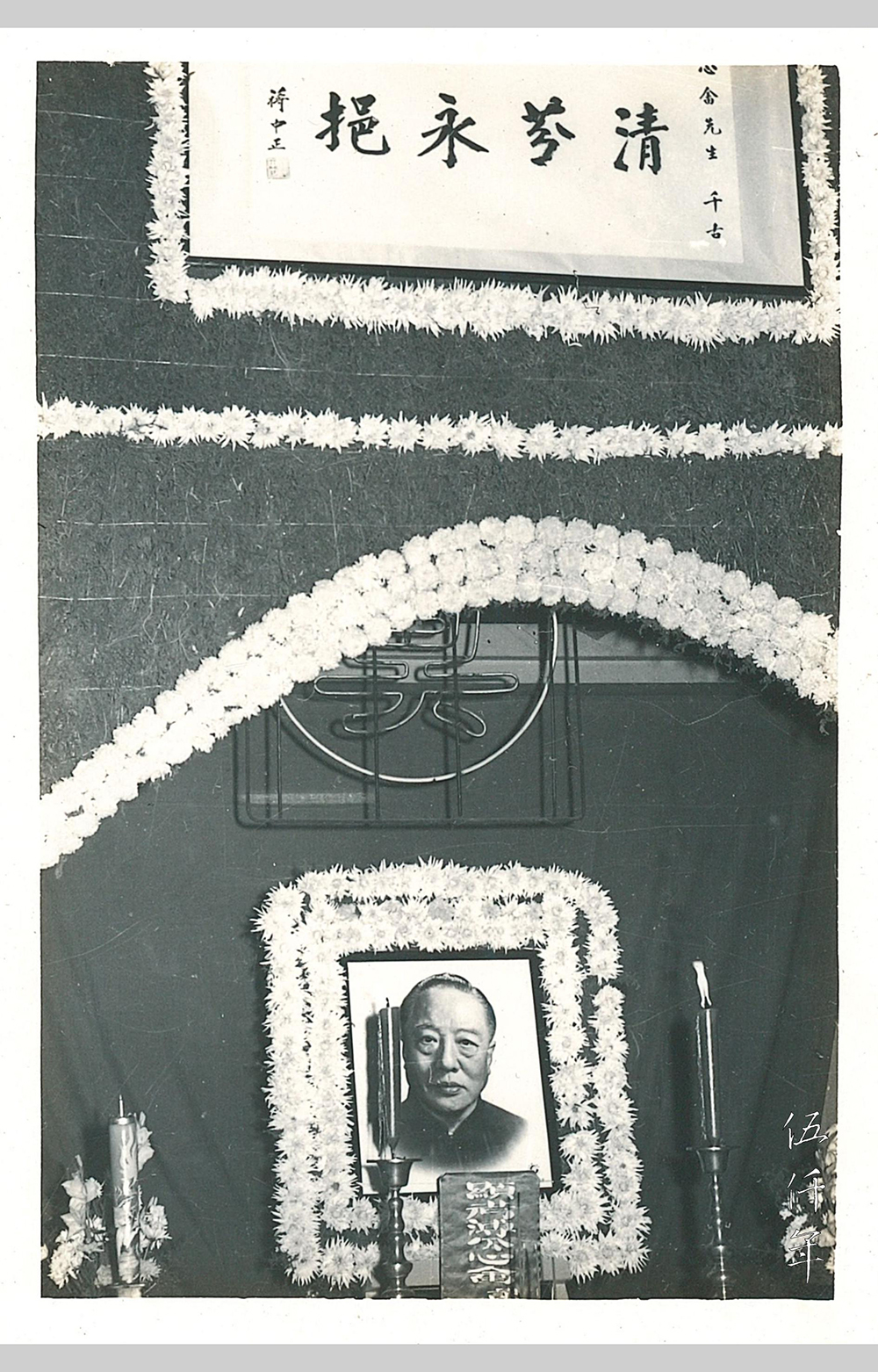
The commemorative plaque with calligraphy by President Chiang Kai-shek was displayed high above the altar in the state room of the Chi-le Funeral Home. Photograph courtesy Mr. Tung Liang-yen and Mr. Tung Liang-shuo

Front cover of the obituary programme titled The Life of Mr. P’u Ju. Photograph courtesy Mr. Tung Liang-yen and Mr. Tung Liang-shuo
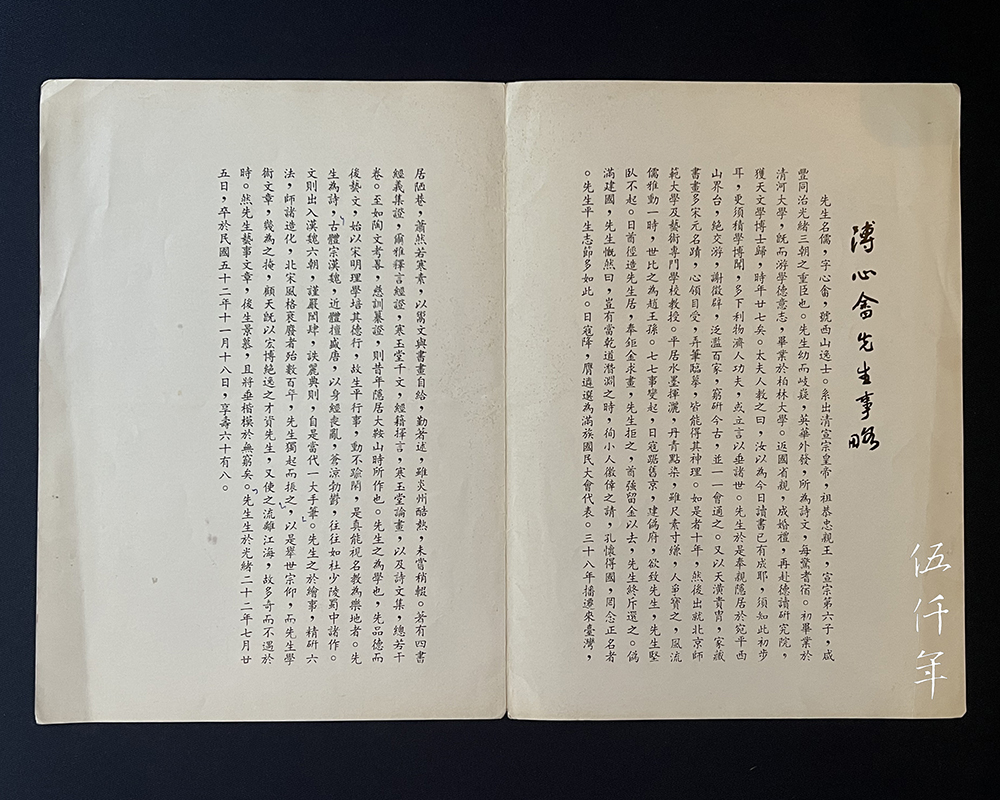
Inside page of the obituary programme titled The Life of Mr. P’u Ju. Photograph courtesy Mr. Tung Liang-yen and Mr. Tung Liang-shuo
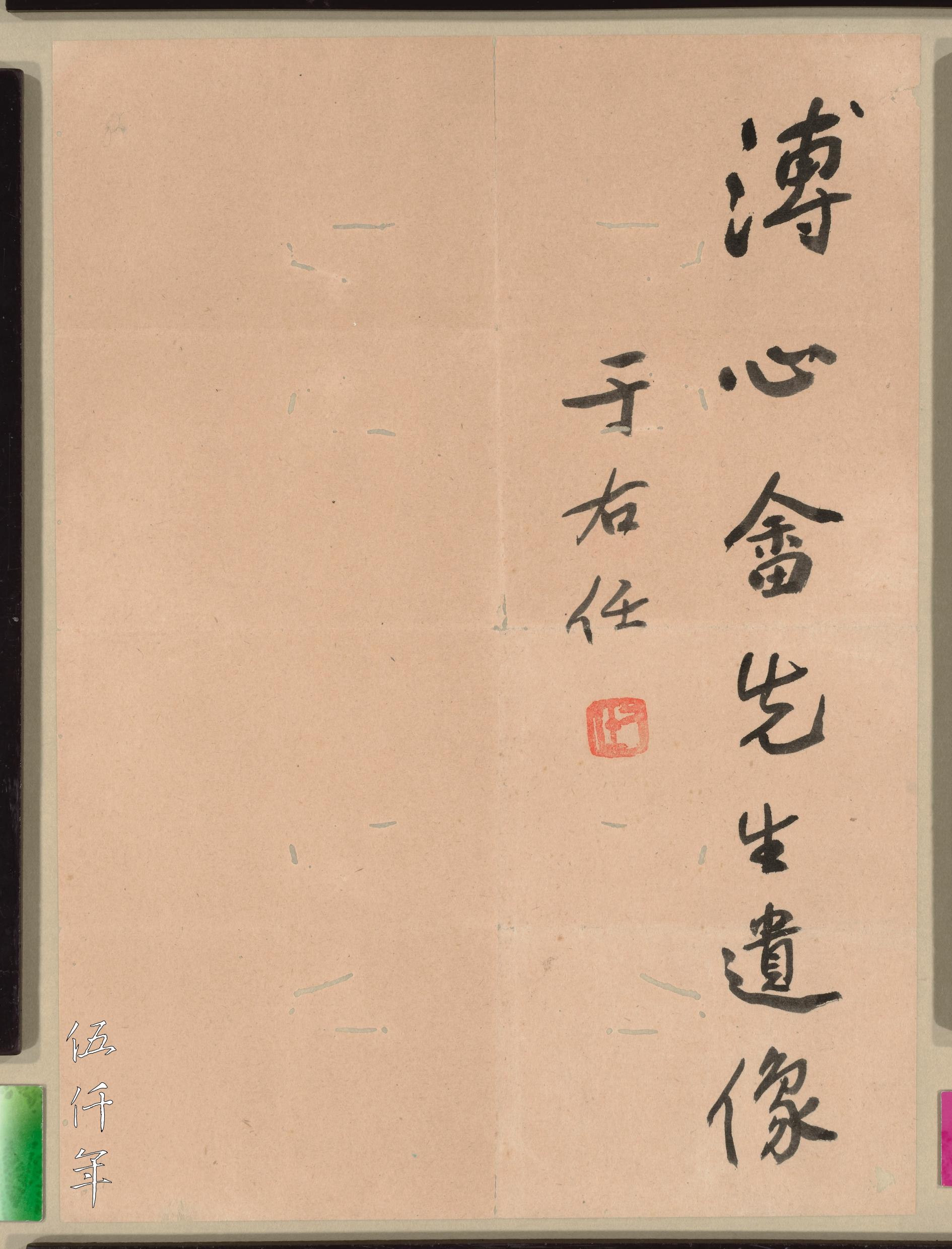
Yü Yu-jen (于右任 1879-1964), president of Control Yuan, wrote a number of pieces with the seven Chinese characters: 溥心畬先生遺像 for the obituary programme titled The Life of Mr. P’u Ju. Photograph courtesy Mr. Tung Liang-yen and Mr. Tung Liang-shuo
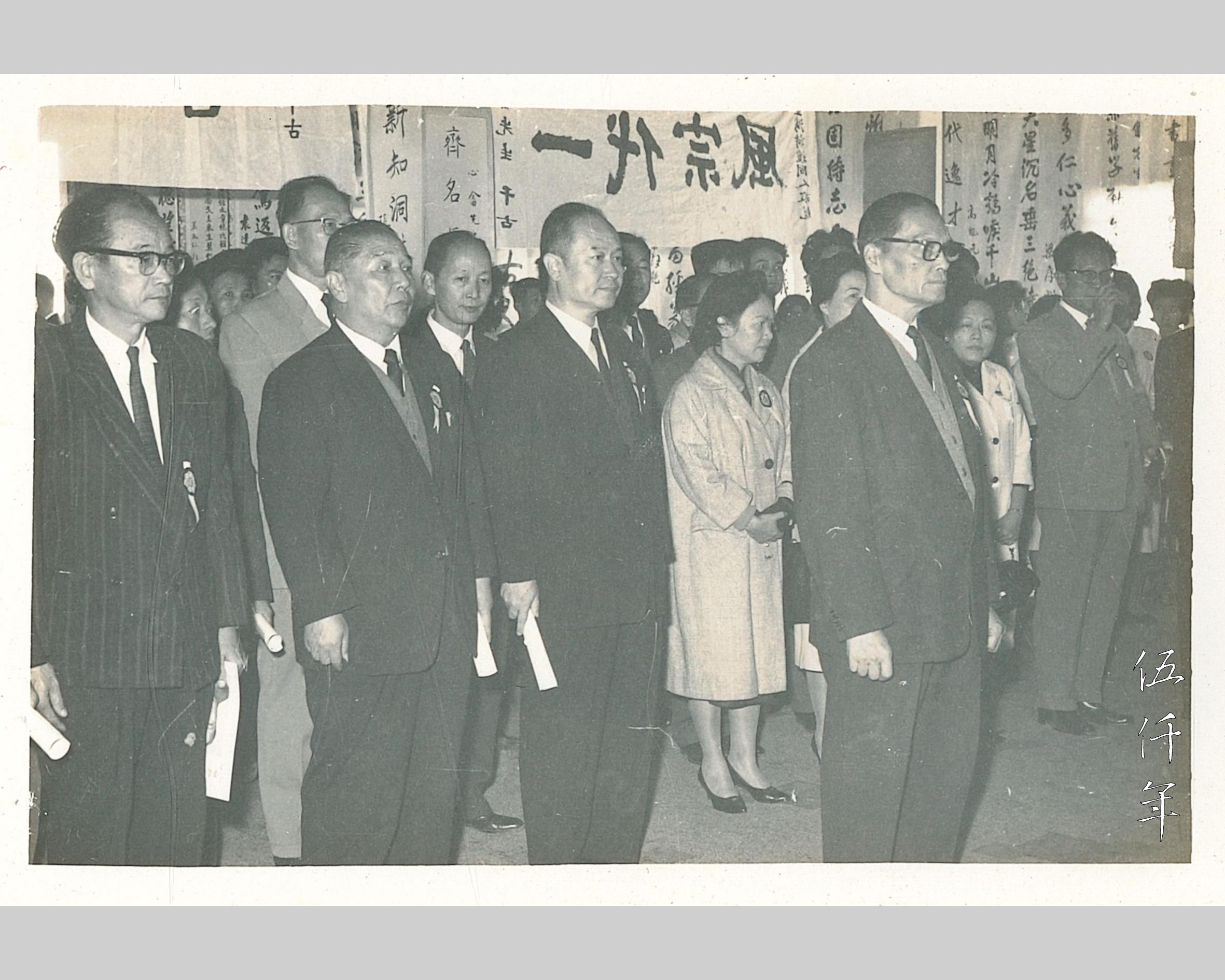
Mr. Huang Chün-pi (黃君璧 1898-1991, first right) was assigned as celebrant of the funeral ceremony on 28 November 1963. Photograph courtesy Mr. Tung Liang-yen and Mr. Tung Liang-shuo
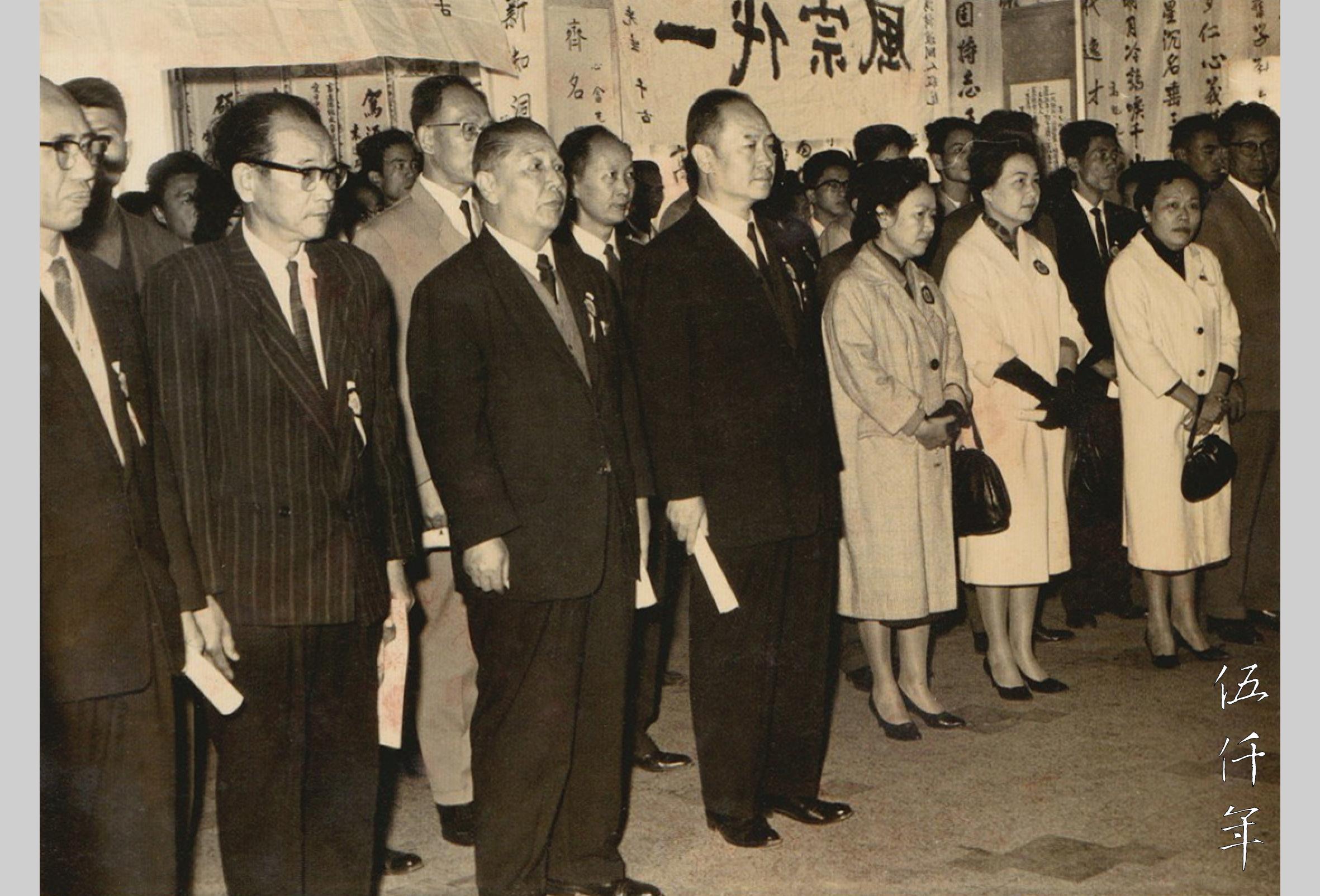
Attendants standing to pay respect at the funeral ceremony on 28 November 1963. Photograph courtesy Mr. Tung Liang-yen and Mr. Tung Liang-shuo
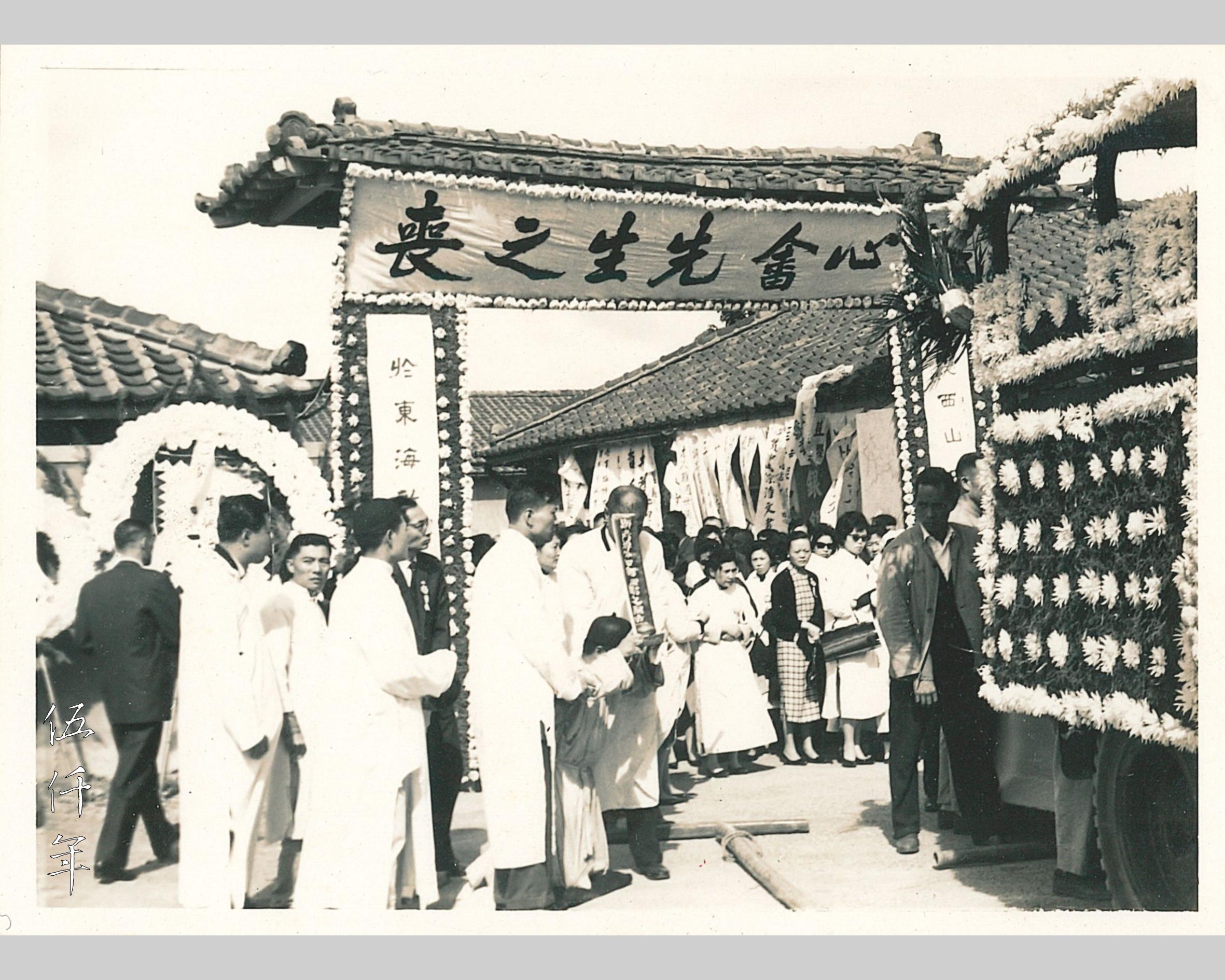
At the end of the funeral ceremony, the son of Mr. P’u Ju kneeling in front of the casket before the hearse started the journey to the tomb. Photograph courtesy Mr. Tung Liang-yen and Mr. Tung Liang-shuo
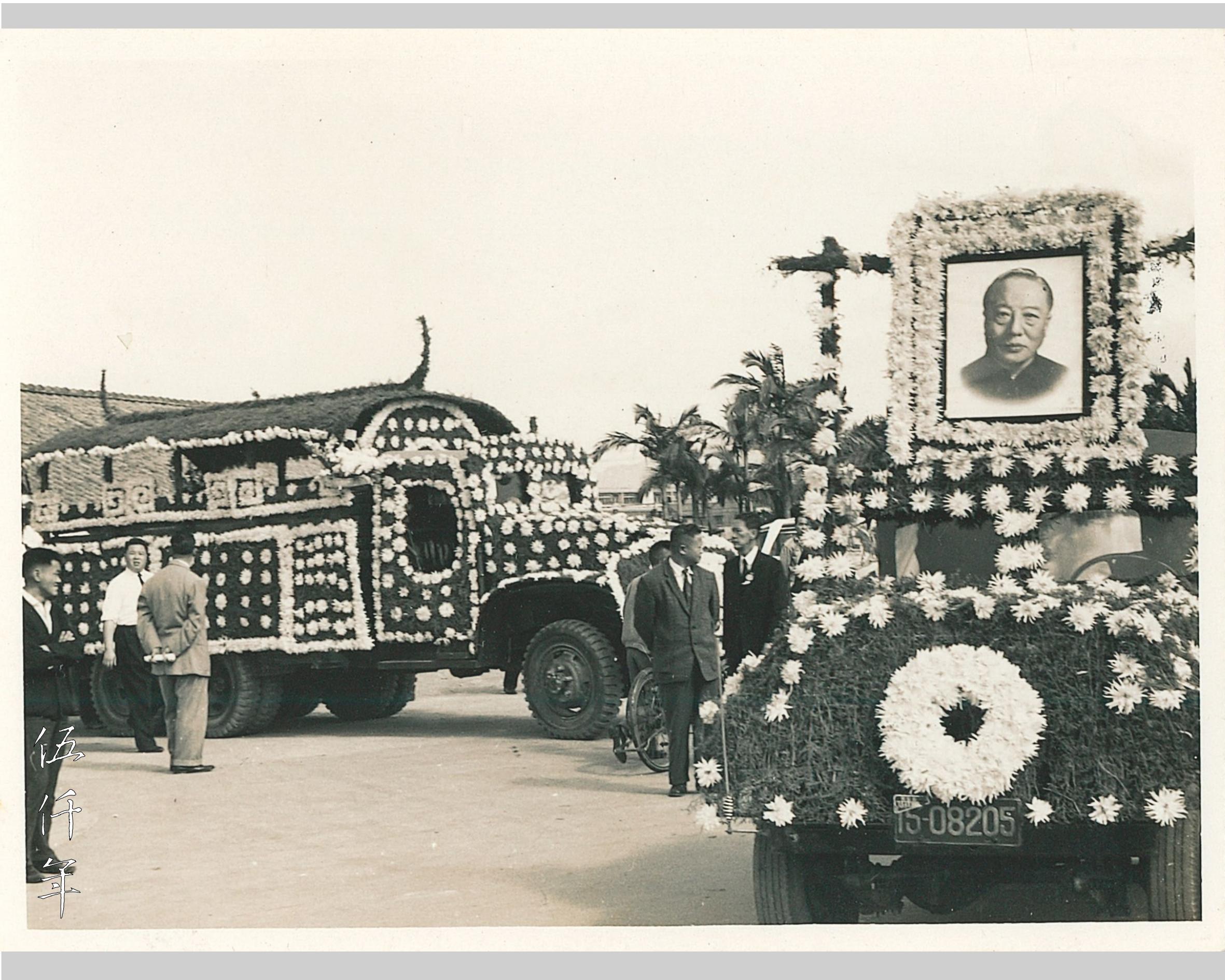
The hearse journeying to the tomb of Mr. P’u Ju on Yangmingshan Mountain, Taipei, on 28 November 1963. Photograph courtesy Mr. Tung Liang-yen and Mr. Tung Liang-shuo

Bird’s-eye view of the Yangmingshan Cemetery. Photograph courtesy Mr. Tung Liang-yen and Mr. Tung Liang-shuo
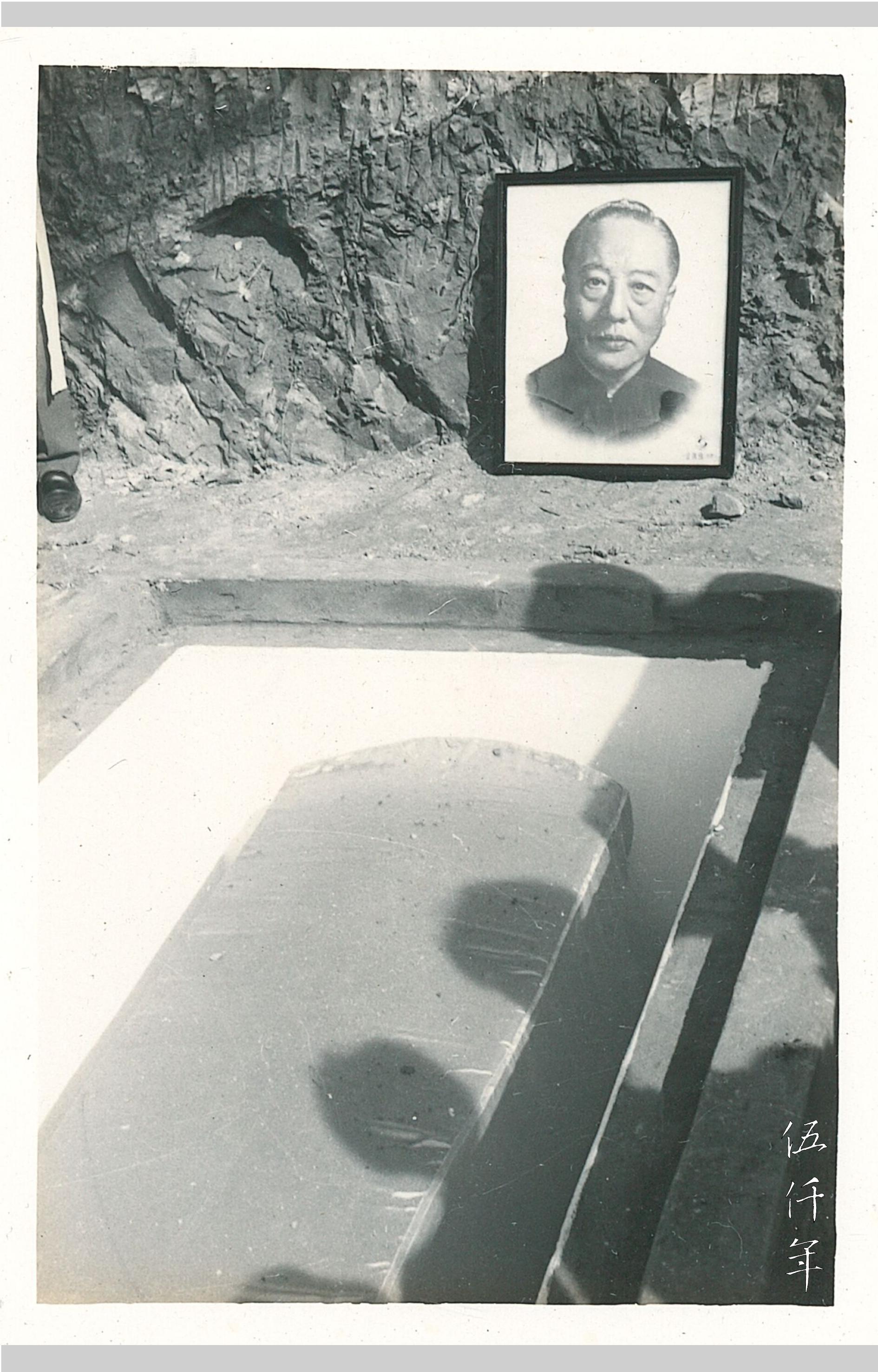
The casket being lowered into the burial pit on 28 November 1963. Photograph courtesy Mr. Tung Liang-yen and Mr. Tung Liang-shuo
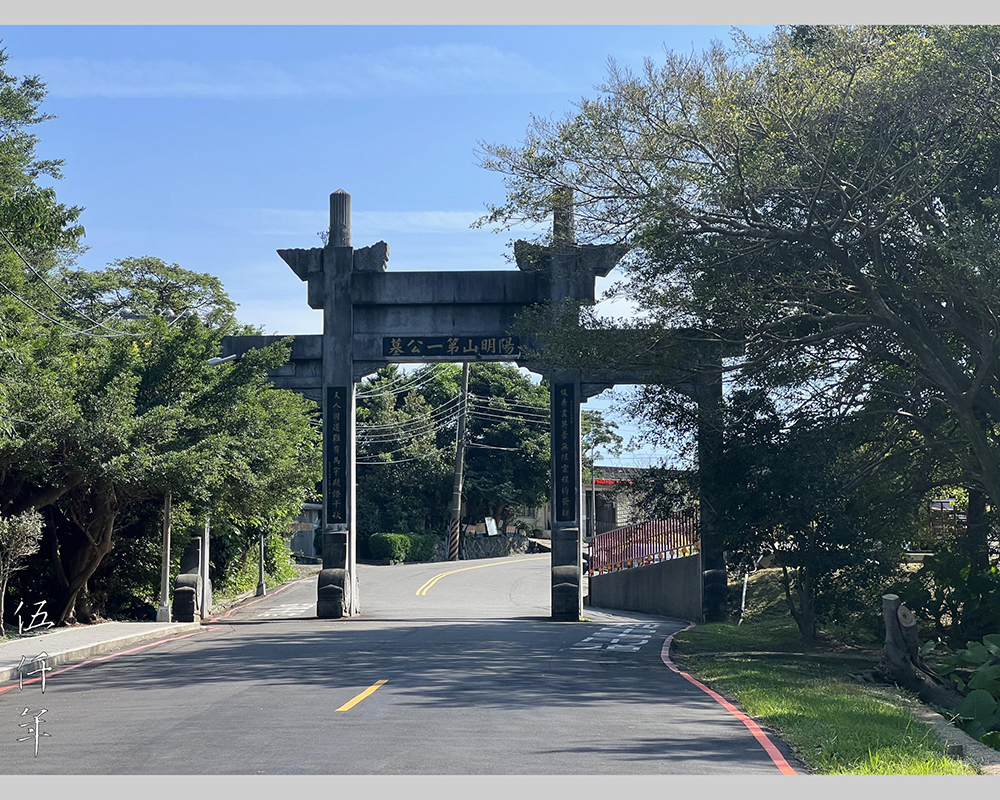
On 8 November 2023, ten days before the sexagenarian cycle of sixty years since the death of Mr. P’u Ju, our editorial team visited the Yangmingshan Cemetery and took photograph of the entrance arch
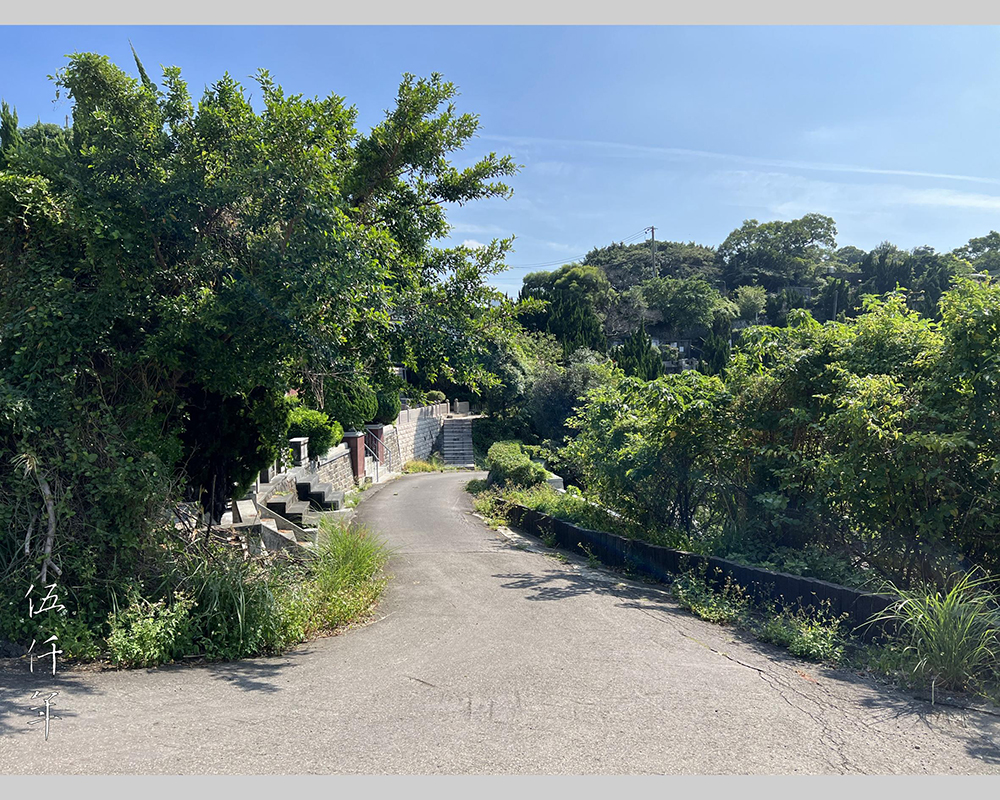
On 8 November 2023, ten days before the sexagenarian cycle of sixty years since the death of Mr. P’u Ju, our editorial team visited the Yangmingshan Cemetery and took photograph of the first footpath leading to the tomb of Mr. P’u Ju
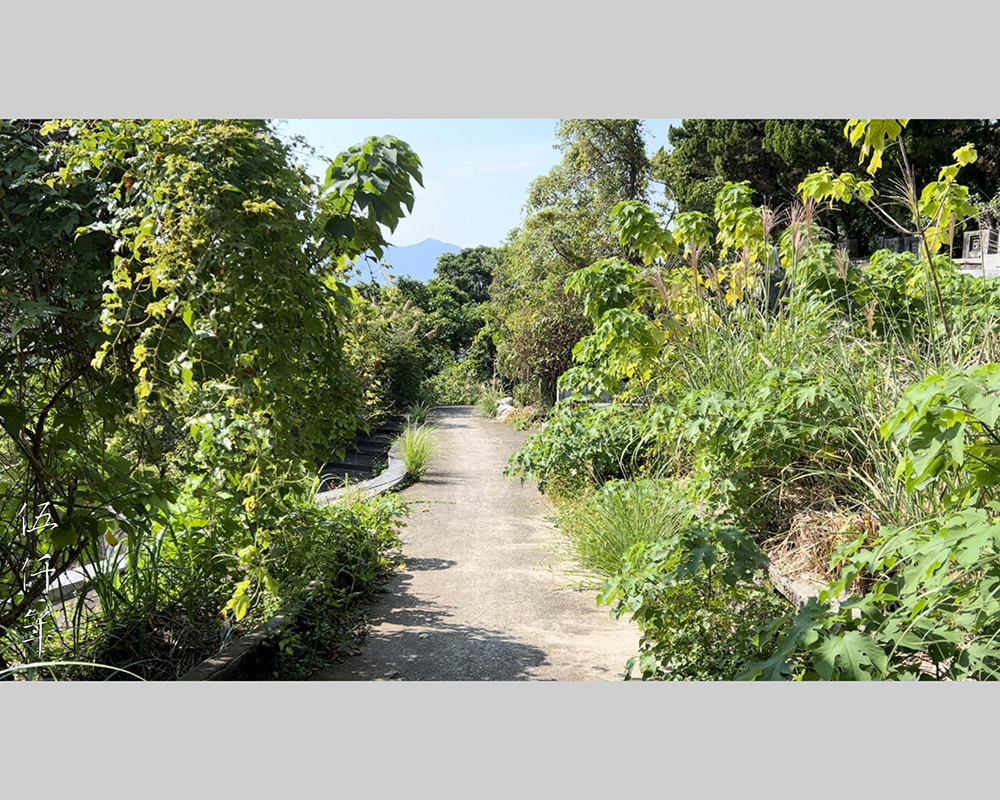
On 8 November 2023, ten days before the sexagenarian cycle of sixty years since the death of Mr. P’u Ju, our editorial team visited the Yangmingshan Cemetery and took photograph of the second footpath leading to the tomb of Mr. P’u Ju

On 8 November 2023, ten days before the sexagenarian cycle of sixty years since the death of Mr. P’u Ju, our editorial team visited the Yangmingshan Cemetery and took photograph of the tomb of Mr. P’u Ju from a distance
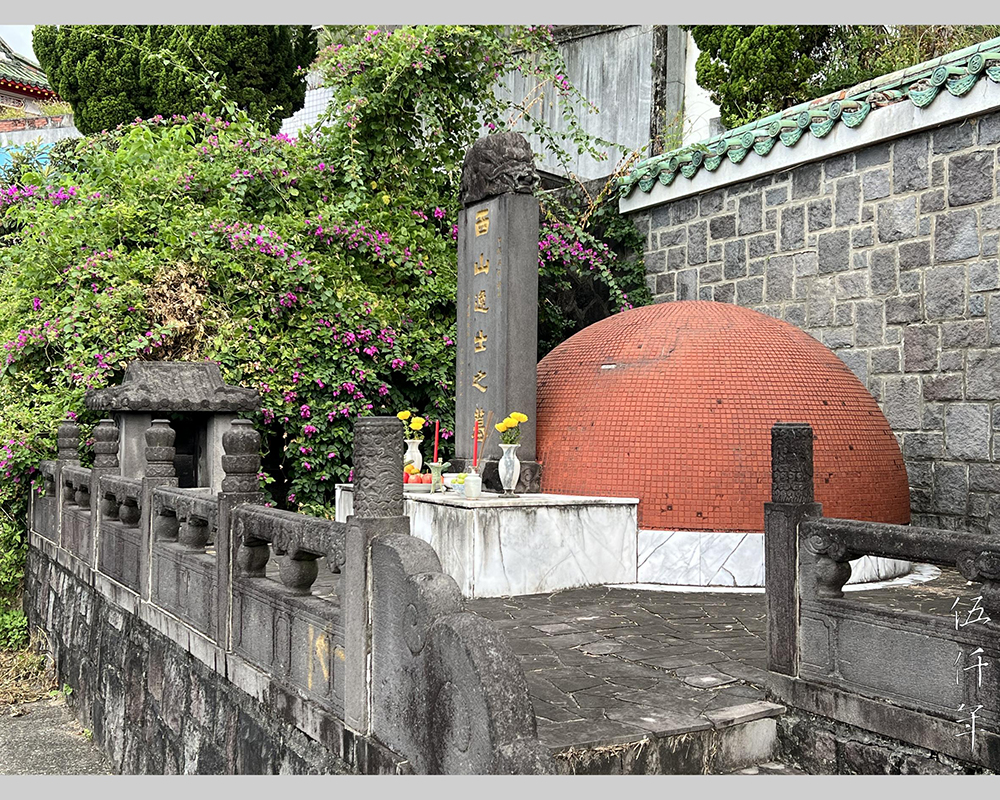
Approaching the tomb of Mr. P’u Ju
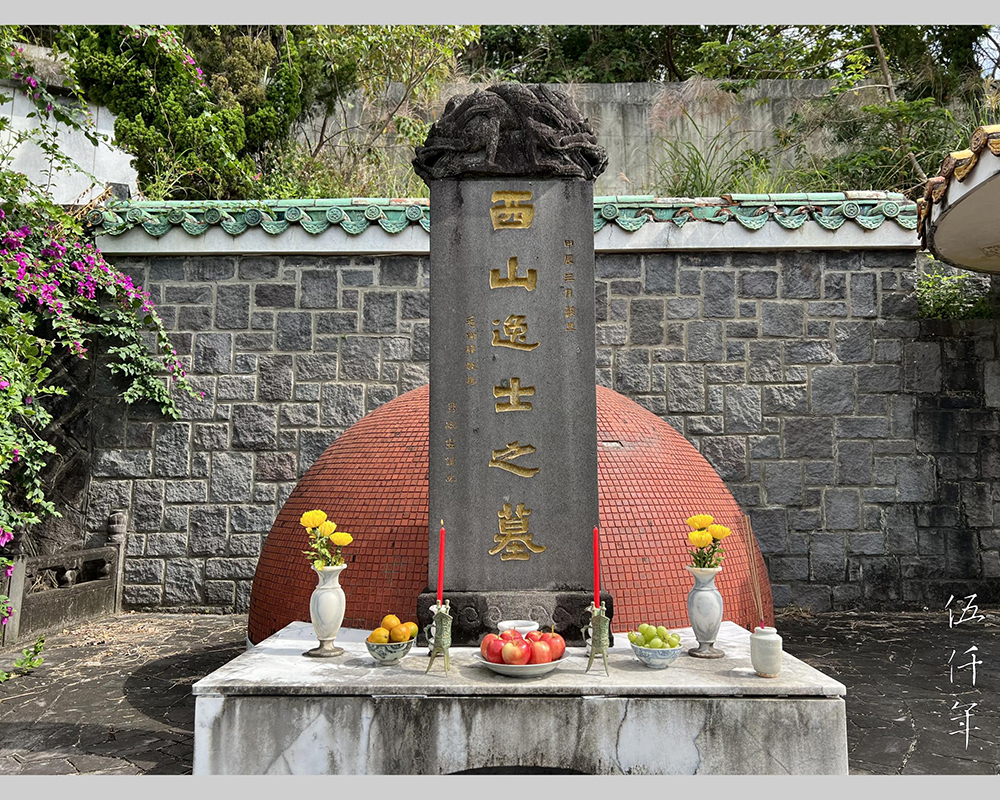
View of tombstone and altar, the words: Hsi-shan I-shih (西山逸士) were carved on the tombstone

Yellow chrysanthemum, candles, fruit plate, fruit bowls, incense pot, incense and archaic drinking vessels were placed on the altar for ritual offering

Frontal view of the dragon sculpture above the tombstone

Frontal view of the dragon sculpture above the tombstone

Four Chinese characters: kao (高), feng (風), wan (萬), tsai (載), meaning Integrity that Lasts Forever, were carved at the lower part of the dragon sculpture above the tombstone.
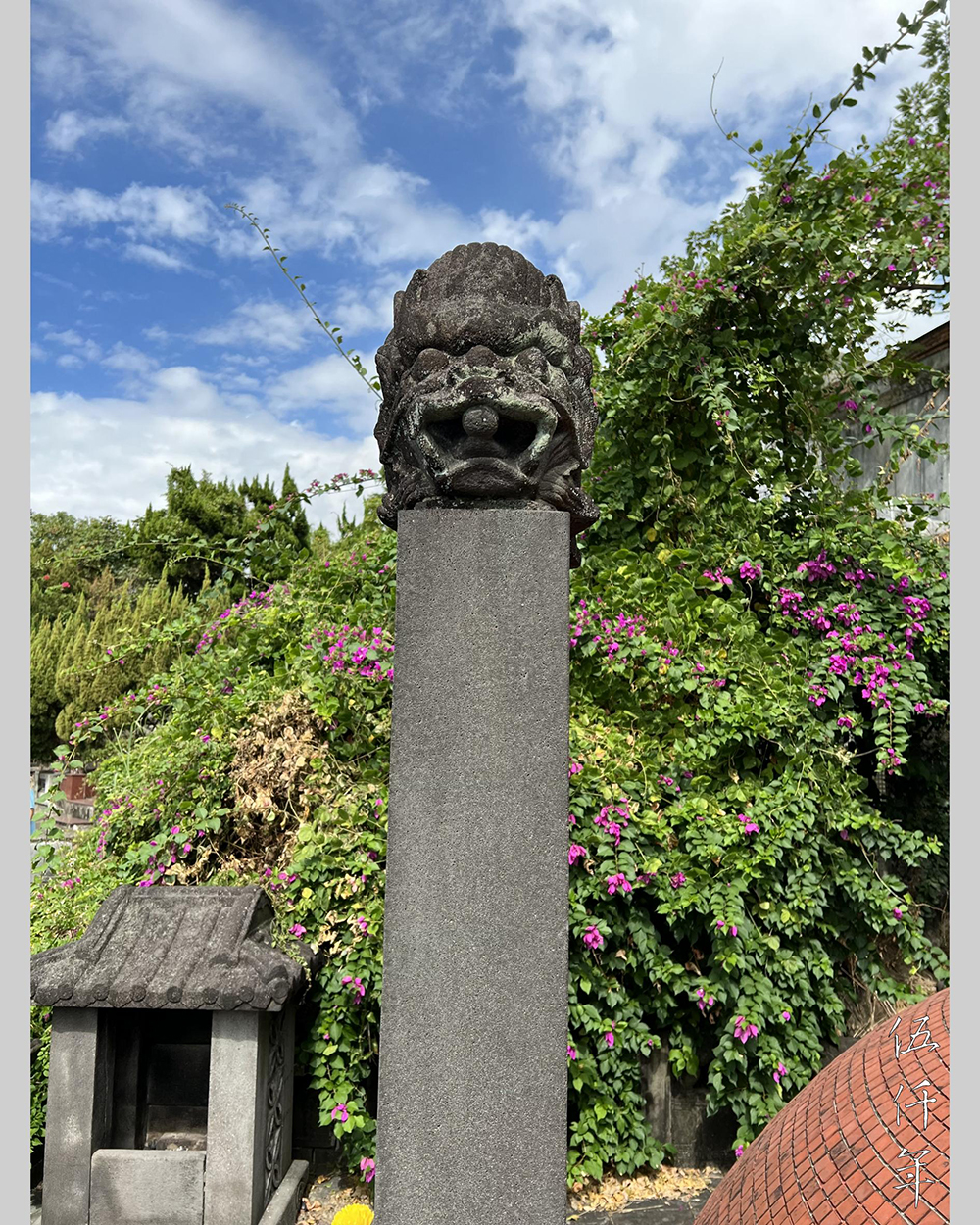
Side view of the dragon sculpture above the tombstone

Another side view of the dragon sculpture above the tombstone
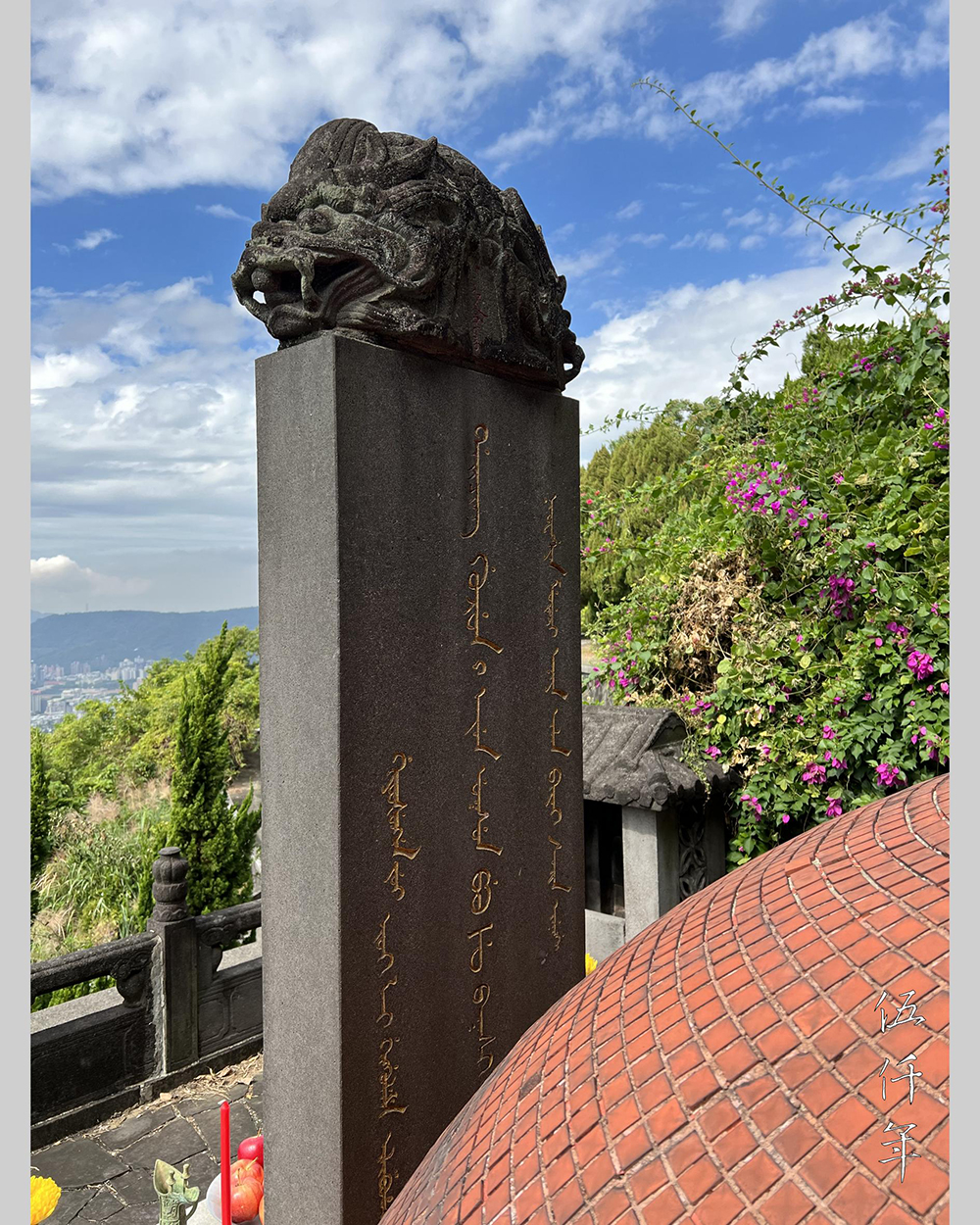
Manchu script carved at the back of the tombstone
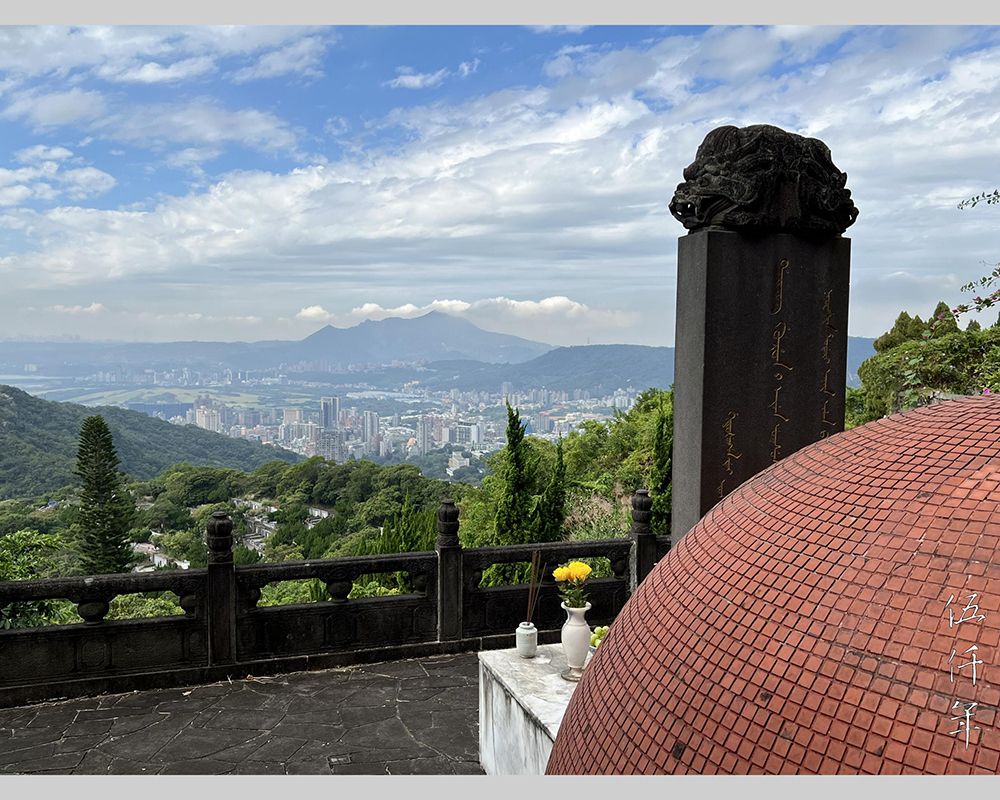
View of Taipei City from the tomb of Mr. P’u Ju
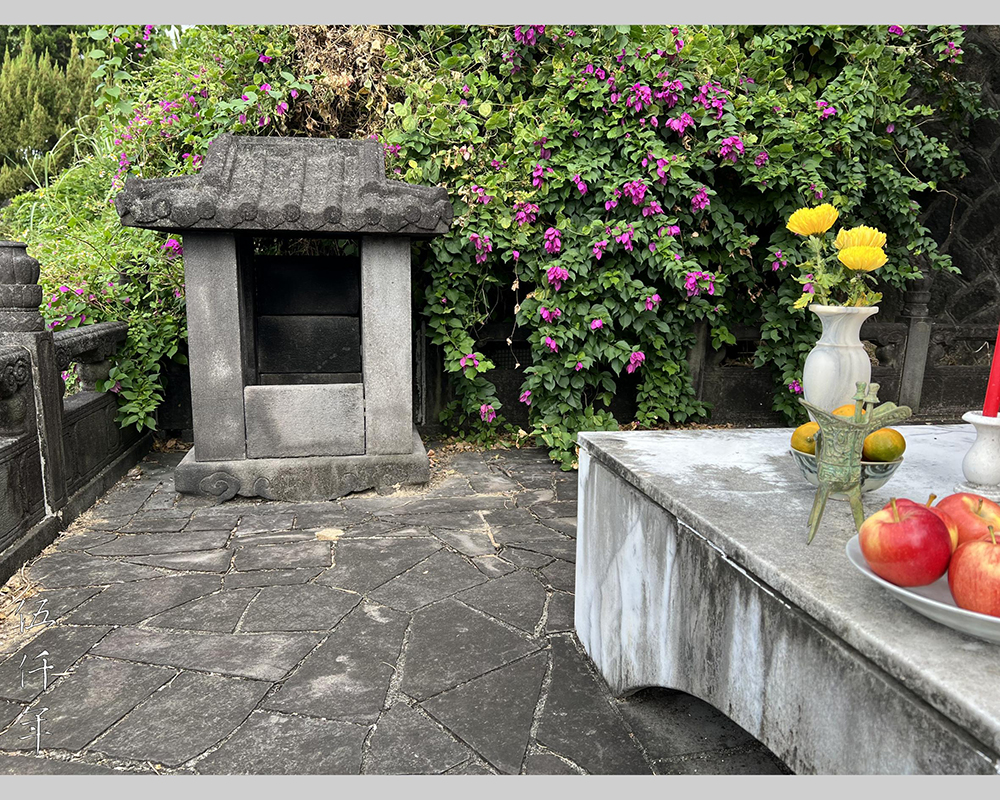
Miniature stone temple for the God of Earth at the front left corner of the tomb
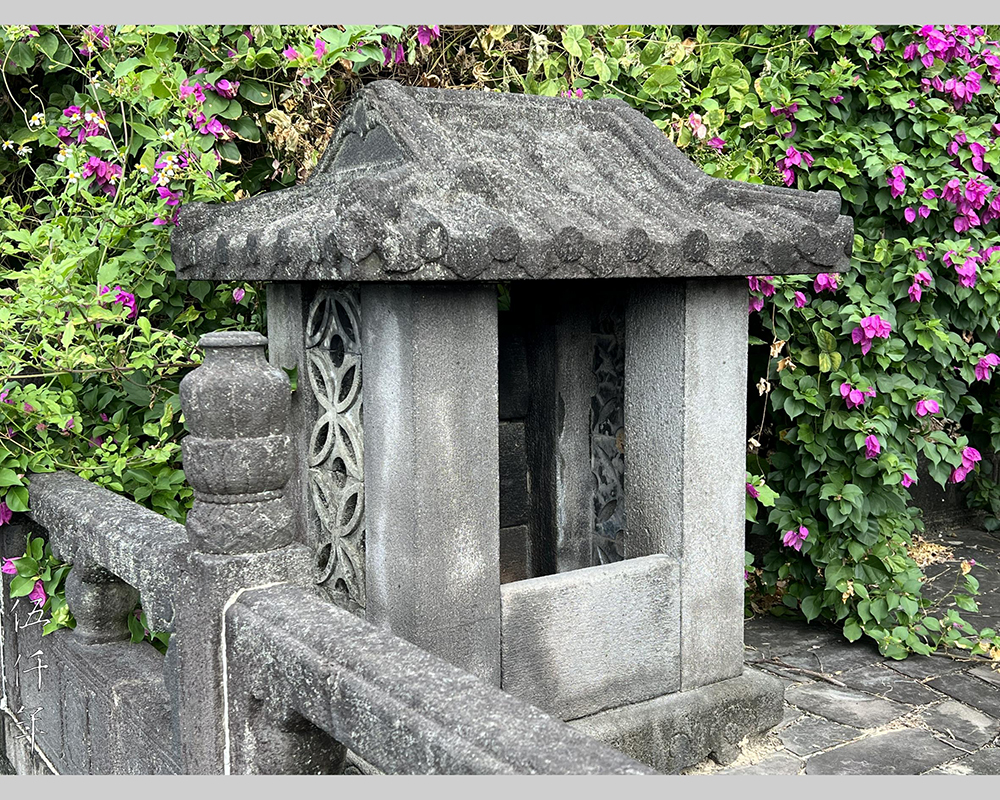
Detail of miniature stone temple for the God of Earth at the front left corner of the tomb
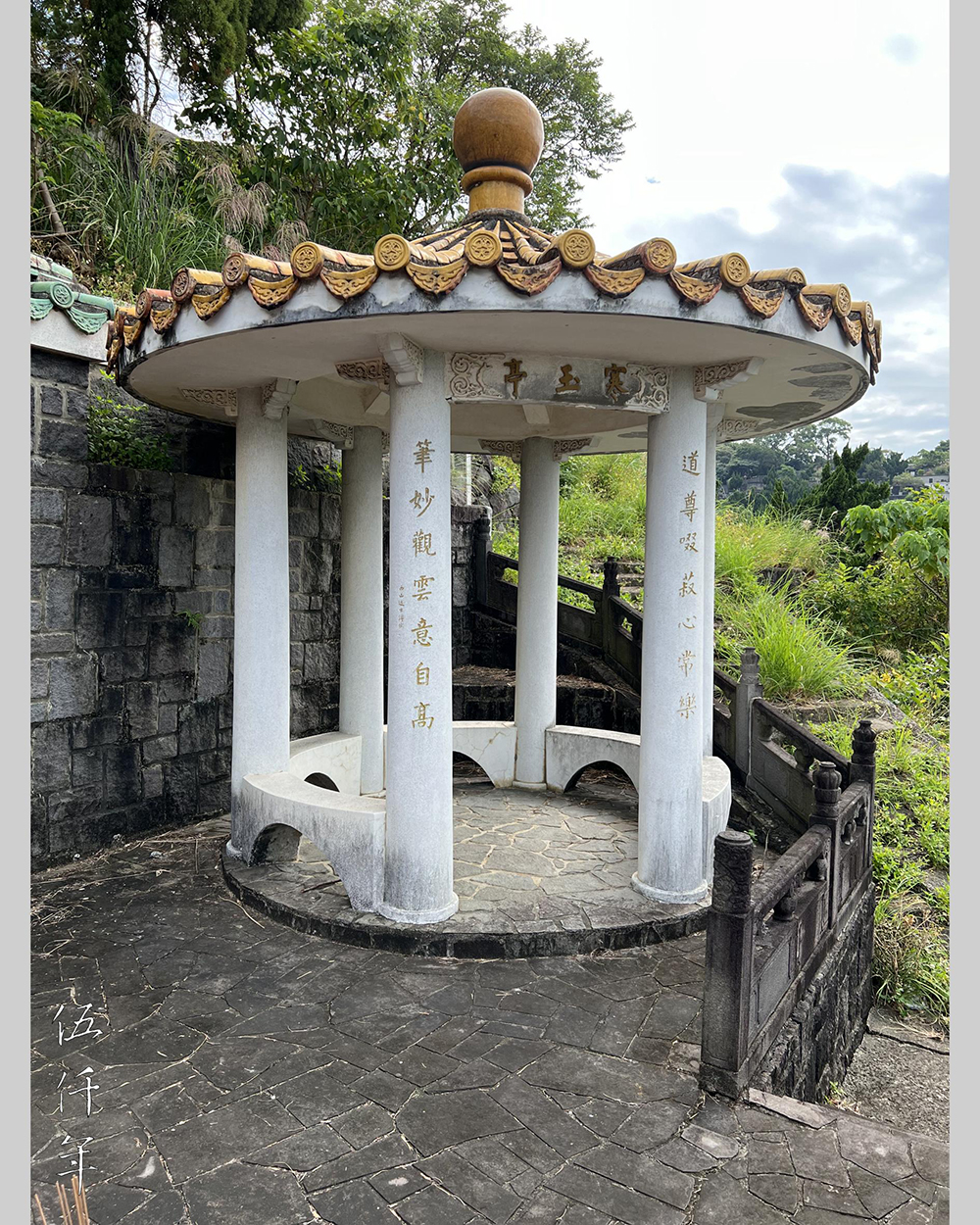
Han-yü Pavilion inside the tomb of Mr. P’u Ju
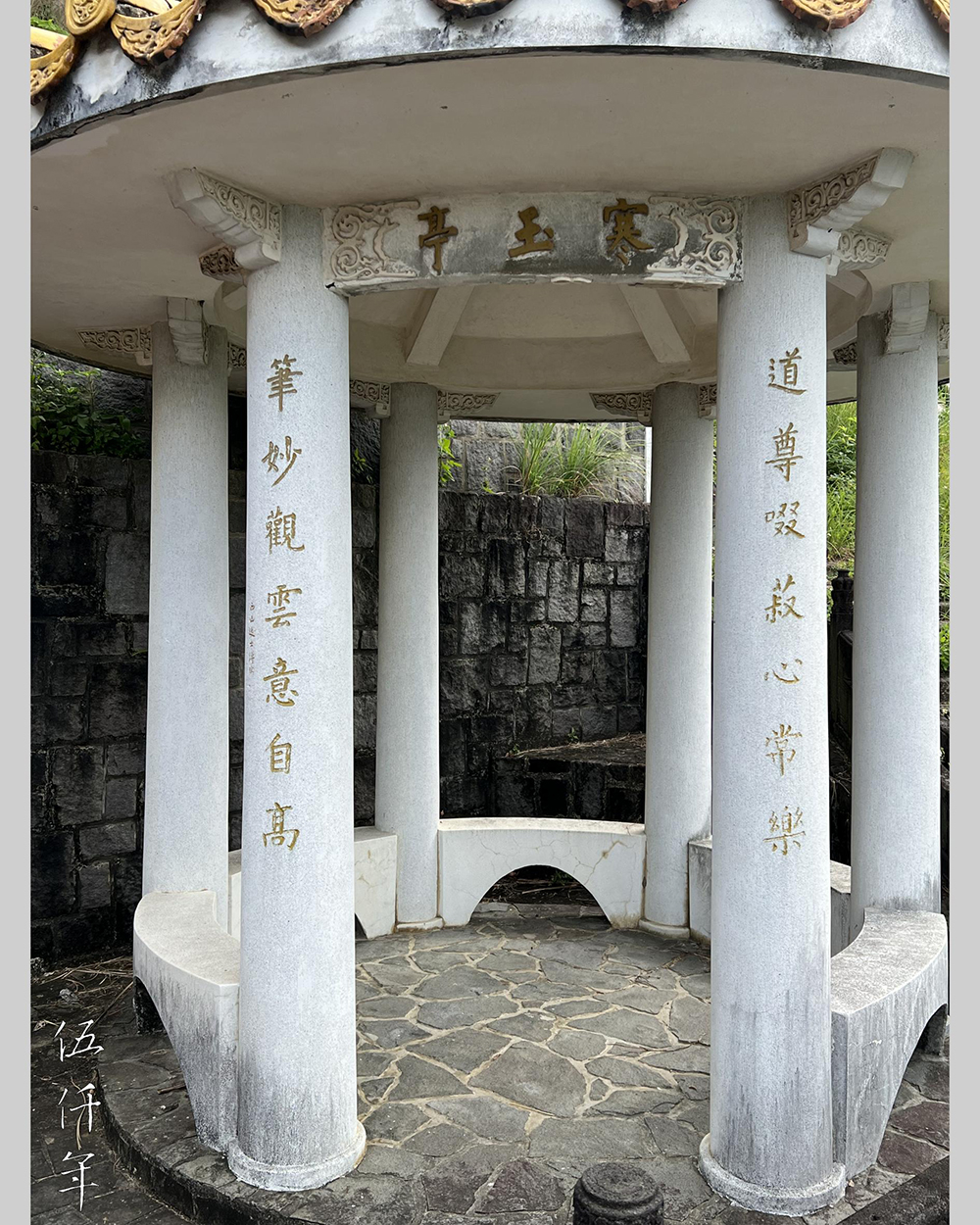
A pair of seven character calligraphy couplets composed and written by Mr. P’u Ju were carved on two of the round columns of Han-yü Pavilion
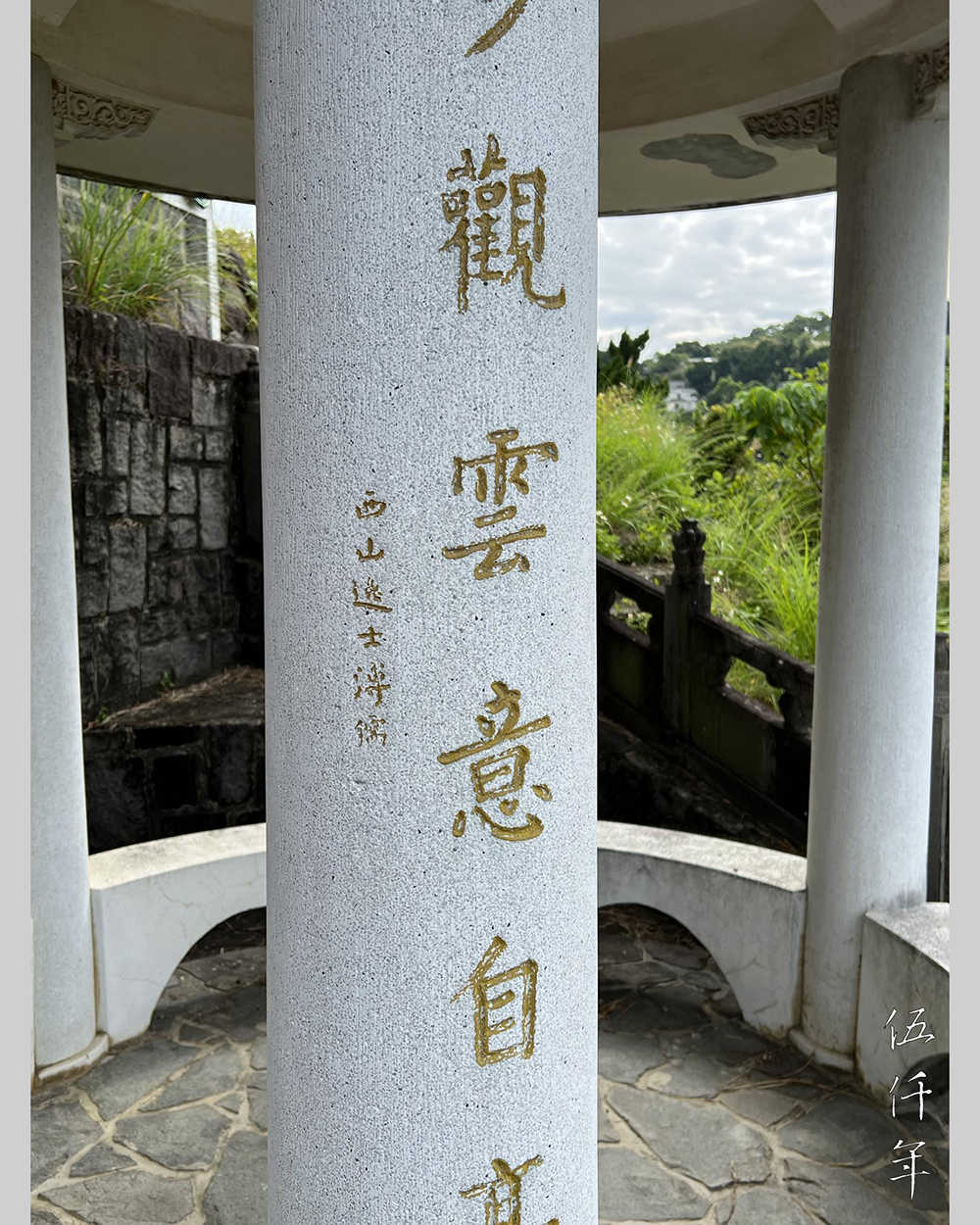
The name P’u Ju was carved on the left side of the left couplet

The three characters Han-yü t’ing (Han-yü Pavilion 寒玉亭) were affixed horizontally on the beam

On the beam inside the Han-yü Pavilion, the character fu (福) was affixed upside down as a sign of receiving good fortune

Side view of the tomb of Mr. P’u Ju
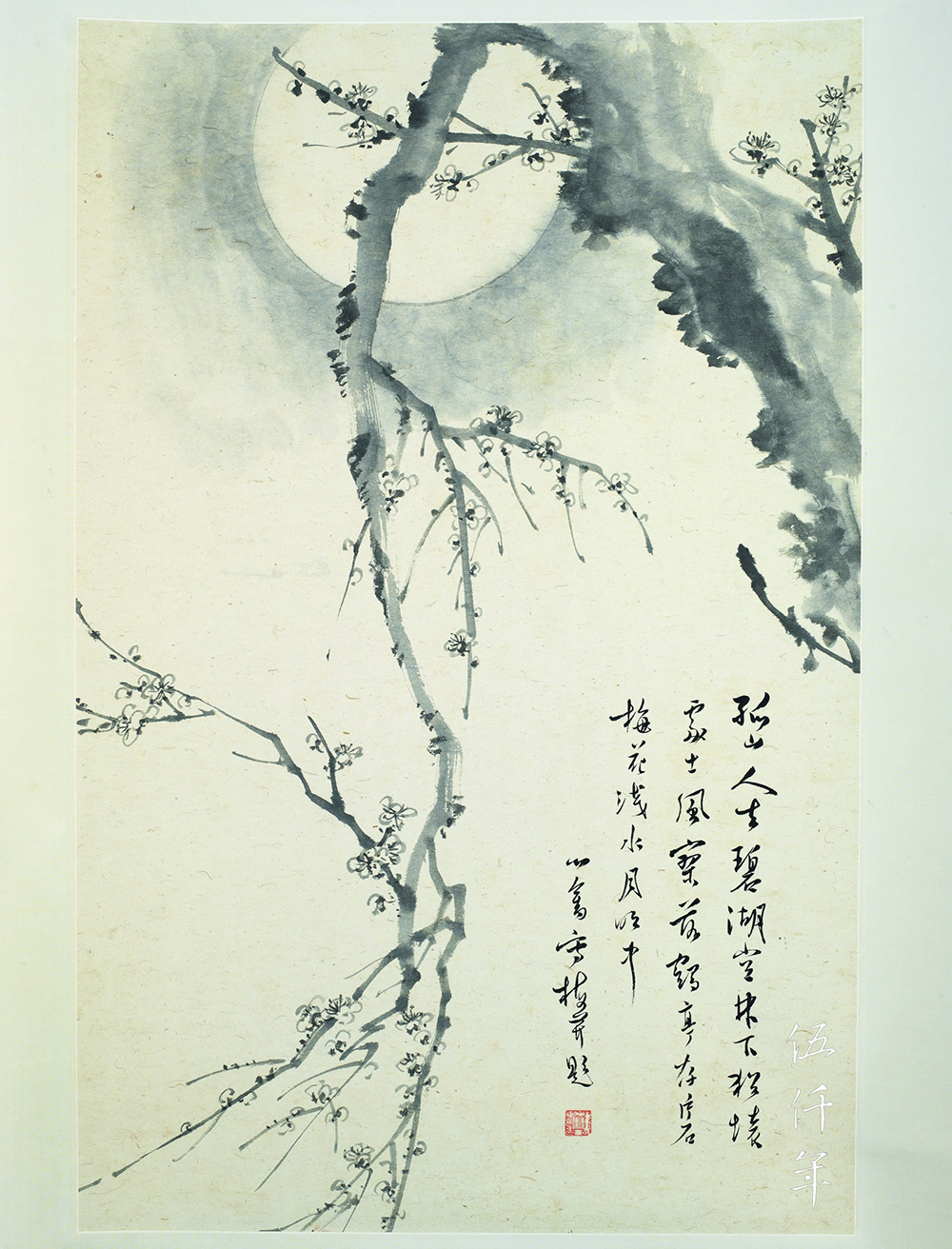
Lucent Moon and Prunus by Mr. P’u Ju. The inscribed poem reads:
Lonely mountain,
Green empty river,
Trace no more.
In my rustic world,
I long recall
Spirit of yours.
A forlorn pavilion
Dwell two cranes
By a stone stele.
Drooping prunus
Lightly touches
Pool of lucent moon.
Related Contents:
The Former Prince P'u Ju (溥儒), by the late Mr. Soong Hsün-leng
Calligraphy and Painting, The 2nd Hong Kong Lecture by Mr. P’u Ju (溥儒)
Chinese Literature, Calligraphy and Painting; Text of 1st Hong Kong Lecture by Mr. P’u Ju (溥儒)
On the Common Origin of Calligraphy and Painting, Text of 3rd Hong Kong Lecture by Mr. P’u Ju (溥儒)
